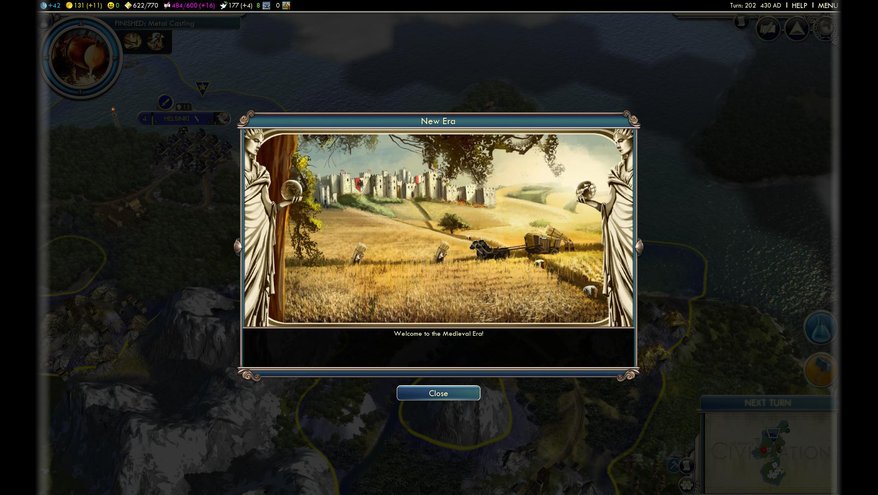
Getting Medieval (again)
250 A.D.: Sweden's first battalion of professional swordsmen is raised in Helsinki. Equipped with the latest in arms and armor, they are a force that can't be matched in close combat by any known nation.
265 A.D.: As this year opened, Austria consisted of only two mega cities: Vienna and Salzburg. By its end, German forces had sacked Salzburg, reducing the Austrian empire to a mere city-state. Vienna remained, however, the largest metropolis in the known world and a force to be reckoned with. The Viennese are quick to make peace with the Germans to keep the invasion from pressing on their great city.
295 A.D.: An oracle arises in Stockholm and advises the Althing. Based on her premonitions, they restructure their assembly into a Republic, where representatives are elected rather than granted a seat by hereditary right. The representatives may then give their support to a claimant of the title of High King, who shall serve as the head of state for the new republic.
Yeah, gotta write myself a reason to have kings and queens again. The Middle Ages just wouldn't be the same without them. I've once again adopted the Republic policy (for free, as a benefit of building the Oracle), increasing productivity in all of my cities.
430 A.D.: The Swedes perfect metal casting, signaling the dawn of a new era.
In the blink of an eye, I'm at the good ol' Middle Ages again. I'm still 4th to get here, but maintain my lead in total number of technologies researched. Overall, it's been a fairly uneventful 4400 years, which is why I combined Ancient and Classical into a single post this time. Other than barbarians, Sweden has never been at war. That's sure to change, though, so check back next week for Part 2!
The biggest gaming news, reviews and hardware deals
Keep up to date with the most important stories and the best deals, as picked by the PC Gamer team.
Len Hafer is a freelancer and lifelong PC gamer with a specialty in strategy, RPGs, horror, and survival games. A chance encounter with Warcraft 2: Tides of Darkness changed her life forever. Today, her favorites include the grand strategy games from Paradox Interactive like Crusader Kings and Europa Universalis, and thought-provoking, story-rich RPGs like Persona 5 and Disco Elysium. She also loves history, hiking in the mountains of Colorado, and heavy metal music.

